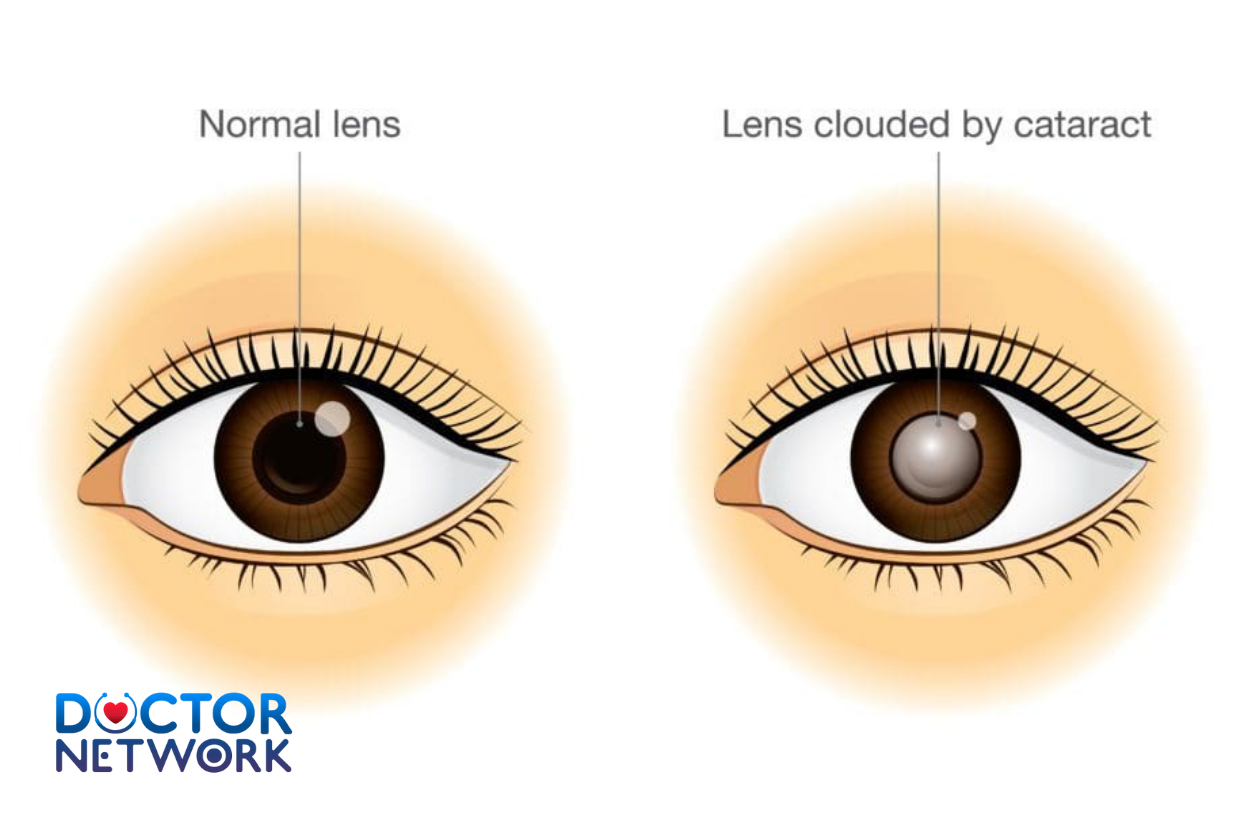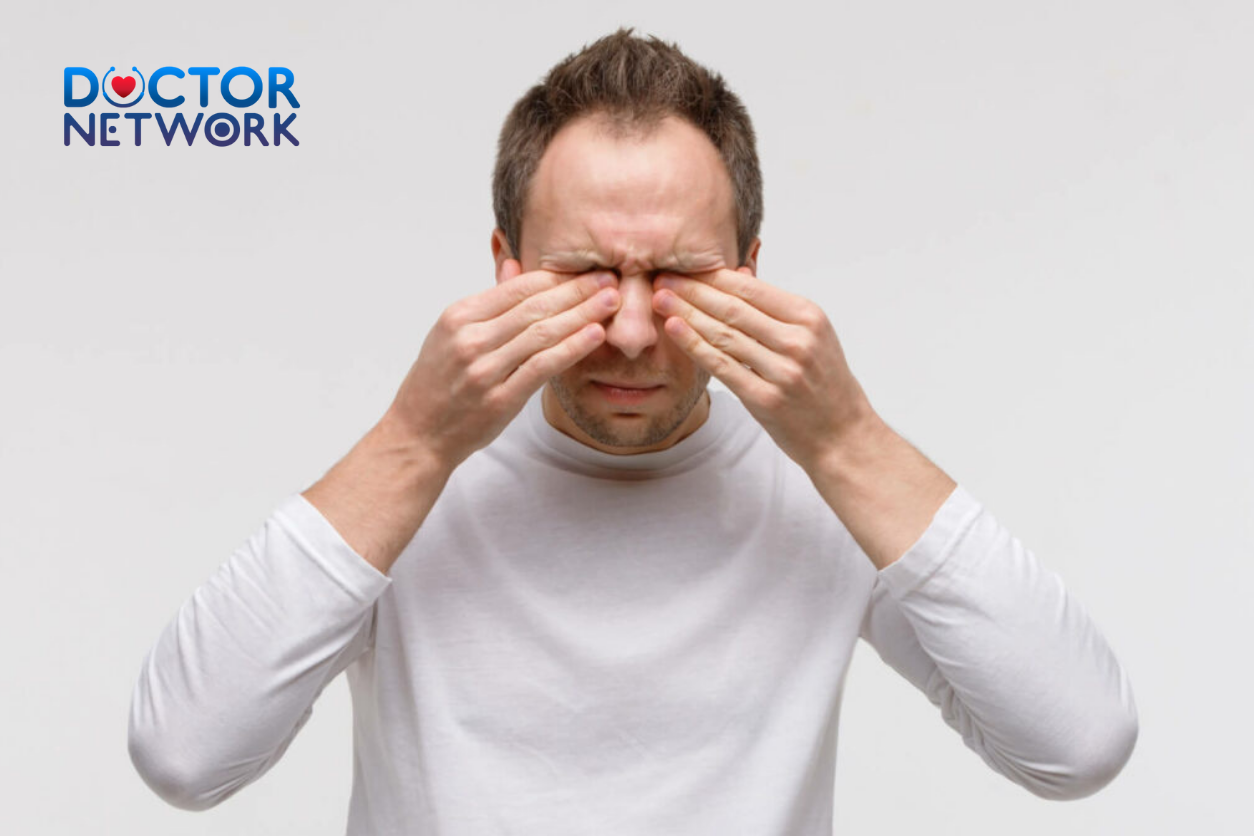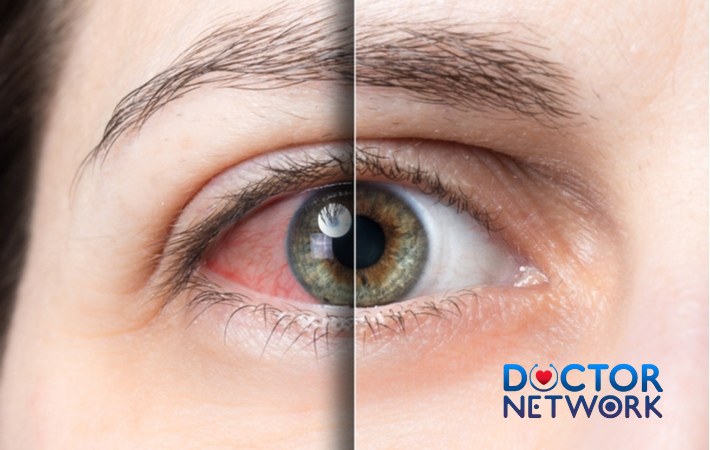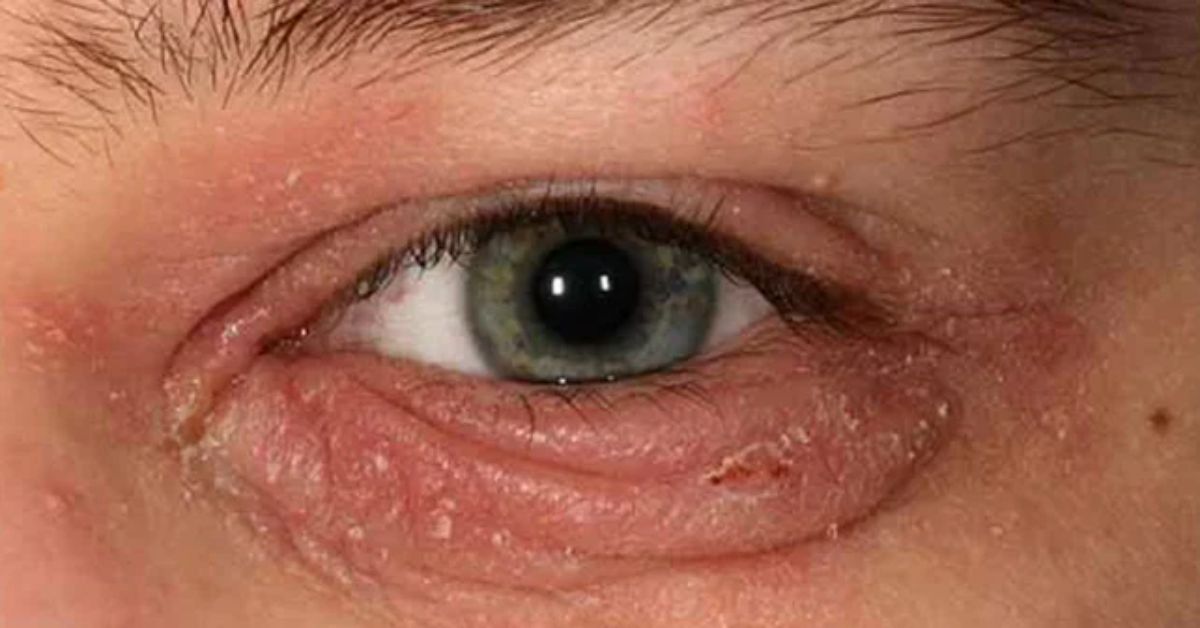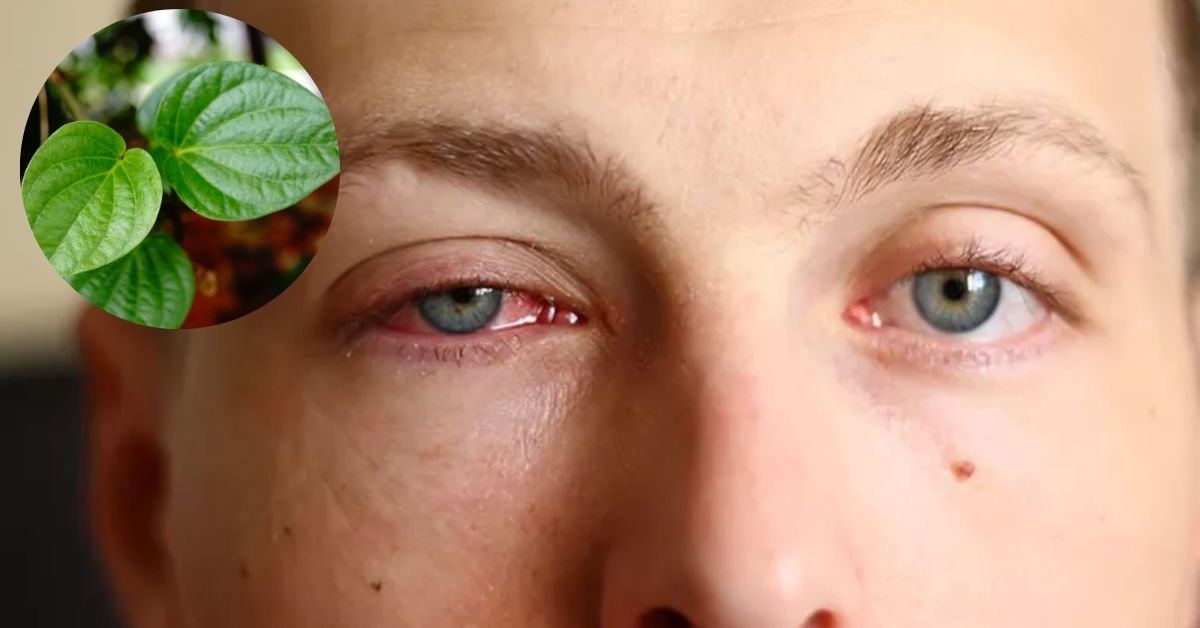Morning eye discomfort affects millions of people worldwide, transforming what should be a refreshing start into an uncomfortable ordeal. This widespread complaint stems from various physiological processes that occur during sleep, when our eyes undergo natural changes in tear production, exposure to environmental factors, and reduced protective mechanisms. Understanding the root causes of ocular pain upon awakening is crucial for effective treatment and prevention.
Why Do My Eyes Hurt When I Wake Up? – This comprehensive guide explores the primary culprits behind morning eye discomfort, including dry eye syndrome, recurrent corneal erosion, inflammatory conditions, and environmental triggers. We’ll examine diagnostic approaches, evidence-based treatment strategies, and preventive measures that can restore comfortable mornings. Additionally, we’ll address when professional medical intervention becomes necessary and provide practical self-care recommendations based on current ophthalmological research.
Understanding the Common Causes of Morning Eye Pain
Multiple interconnected factors contribute to ocular discomfort upon awakening, with most stemming from processes that intensify during sleep hours. The reduced frequency of blinking, altered tear film dynamics, and prolonged exposure to environmental irritants create conditions that compromise eye surface health overnight.

Dry Eye Syndrome: The Primary Culprit
Dry eye syndrome represents the most prevalent cause of morning ocular discomfort, affecting approximately 16 million Americans according to recent epidemiological studies. This condition occurs when the lacrimal glands produce insufficient tears or when tear quality deteriorates, leaving the corneal and conjunctival surfaces inadequately lubricated.
During sleep, several mechanisms exacerbate dryness:
- Reduced blink reflex: The absence of conscious blinking eliminates the natural mechanism that distributes tears across the ocular surface
- Decreased tear production: Lacrimal gland activity diminishes during sleep cycles, reducing overall tear volume
- Environmental exposure: Heating systems, air conditioning units, and bedroom fans accelerate tear evaporation
- Incomplete eyelid closure: Some individuals experience subclinical lagophthalmos, allowing air circulation to further desiccate exposed areas
Common manifestations include a gritty sensation resembling sand particles, burning sensations, stinging discomfort, conjunctival redness, and paradoxical excessive tearing as the eye attempts to compensate for surface irritation.
| Dry Eye Severity Levels | Symptoms | Treatment Approach |
|---|---|---|
| Mild | Occasional grittiness, minimal redness | Preservative-free artificial tears |
| Moderate | Daily discomfort, burning sensation | Gel lubricants, warm compresses |
| Severe | Constant pain, vision fluctuation | Prescription drops, punctal plugs |
Recurrent Corneal Erosion (RCE): Sharp Morning Pain
Recurrent corneal erosion occurs when the outermost corneal layer, the epithelium, fails to maintain proper adhesion to the underlying basement membrane. This condition creates a scenario where the eyelid can mechanically disrupt loosely attached epithelial cells during eye opening, resulting in sudden, severe pain.
The pathophysiology involves compromised hemidesmosomes—microscopic structures that anchor epithelial cells to deeper corneal layers. Previous corneal abrasions, genetic predispositions affecting epithelial basement membrane composition, or dystrophic changes can weaken these cellular connections.
Patients typically experience:
- Sharp, stabbing pain upon initial eye opening
- Sensation of something “tearing” across the cornea
- Photophobia (light sensitivity)
- Excessive lacrimation
- Temporary vision blurring
Blepharitis and Eyelid Inflammation
Blepharitis encompasses inflammatory conditions affecting the eyelid margins, commonly resulting from meibomian gland dysfunction or bacterial overgrowth along the lash line. This condition significantly impacts tear film stability, creating conditions conducive to overnight ocular surface irritation.
Two primary forms exist:
- Anterior blepharitis: Affects the front eyelid margin where eyelashes attach
- Posterior blepharitis: Involves meibomian glands within the tarsal plate
Inflammatory mediators released during active blepharitis disrupt normal tear composition, reducing the lipid layer that prevents evaporation. Debris accumulation along the lash line provides bacterial breeding grounds, perpetuating the inflammatory cycle.
Allergic Reactions and Environmental Triggers
Allergen exposure during sleep hours can trigger histamine release, resulting in conjunctival inflammation, eyelid swelling, and surface irritation. Common bedroom allergens include:
- Dust mites in bedding materials
- Pet dander on pillows or blankets
- Pollen entering through windows
- Chemical irritants from cleaning products
- Fabric softeners or laundry detergents
Allergic conjunctivitis typically presents with itching sensations, conjunctival redness, eyelid edema, and watery discharge upon awakening.
Nocturnal Lagophthalmos: Incomplete Eyelid Closure
Nocturnal lagophthalmos affects individuals whose eyelids fail to completely close during sleep, leaving portions of the cornea exposed to air circulation. This exposure leads to localized desiccation, particularly affecting the superior corneal regions.
Contributing factors include:
- Facial nerve weakness or paralysis
- Anatomical variations in eyelid structure
- Previous eyelid surgery complications
- Thyroid eye disease
- Aging-related eyelid laxity
The exposed corneal areas develop epithelial defects, punctate keratopathy, and inflammatory changes that manifest as pain upon awakening.
Contact Lens-Related Complications
Improper contact lens hygiene, overnight wear of non-approved lenses, or extended wearing schedules can compromise corneal oxygenation and surface integrity. Modern contact lens materials vary significantly in oxygen permeability, water content, and biocompatibility.
Common issues include:
- Corneal hypoxia from reduced oxygen transmission
- Protein deposits creating surface irregularities
- Bacterial contamination from inadequate cleaning
- Mechanical trauma from poorly fitting lenses
- Allergic reactions to lens care solutions
Environmental Factors in the Bedroom
The sleeping environment significantly influences overnight ocular surface health. Low humidity levels, common during winter months or in air-conditioned spaces, accelerate tear evaporation. Direct airflow from fans, heating vents, or air conditioning units creates convective forces that further compromise tear film stability.
Optimal bedroom conditions for ocular comfort:
- Humidity levels between 40-60%
- Minimal direct airflow across the face
- Clean air filtration to reduce allergen exposure
- Appropriate room temperature (65-70°F)
Associated Symptoms Beyond Pain
Morning eye discomfort rarely occurs in isolation, typically accompanying various secondary symptoms that provide diagnostic clues for underlying conditions. Recognition of these associated manifestations helps differentiate between potential causes and guides appropriate treatment selection.
Primary Symptom Constellation
The most frequently reported accompanying symptoms include:
Conjunctival redness results from inflammatory vasodilation, appearing as pink or red discoloration of the normally white scleral surface. This hyperemia indicates active inflammation or irritation affecting conjunctival blood vessels.
Burning and stinging sensations arise from chemical mediator release during inflammatory processes or direct nerve stimulation from surface irregularities. These neuropathic symptoms often intensify with blinking or eye movement.
Gritty or foreign body sensation mimics the feeling of sand particles or debris within the eye, typically indicating corneal epithelial disruption or severe surface dryness. This symptom commonly accompanies dry eye syndrome and recurrent corneal erosion.
Excessive tearing (epiphora) represents a paradoxical response to surface irritation, where reflexive tear production overwhelms normal drainage mechanisms. Poor tear quality often triggers this compensatory mechanism despite apparent wetness.
Photophobia involves abnormal light sensitivity, frequently accompanying corneal surface defects or inflammatory conditions. Patients may experience discomfort in normal lighting conditions or require sunglasses indoors.
Vision fluctuation occurs when tear film irregularities or surface debris temporarily distort optical clarity. Symptoms typically improve with blinking as tears redistribute across the corneal surface.
Secondary Manifestations
Less common but significant associated symptoms include:
- Eyelid swelling (blepharoedema)
- Mucoid or purulent discharge
- Eyelash crusting or debris
- Conjunctival chemosis (swelling)
- Corneal haze or opacity
- Decreased blink frequency
| Symptom Category | Primary Indicators | Associated Conditions |
|---|---|---|
| Inflammatory | Redness, swelling, discharge | Blepharitis, allergic conjunctivitis |
| Neuropathic | Burning, stinging, photophobia | Dry eye, corneal erosion |
| Mechanical | Grittiness, foreign body sensation | Surface irregularities, debris |
When to Seek Professional Medical Advice
Determining appropriate timing for professional ophthalmological consultation requires careful evaluation of symptom severity, duration, and associated warning signs. While many cases of morning eye discomfort respond to conservative self-care measures, certain presentations mandate immediate medical assessment.
Urgent Warning Signs Requiring Immediate Attention
Severe, unrelenting pain that doesn’t respond to over-the-counter lubricants or worsens throughout the day may indicate serious corneal pathology, infectious processes, or elevated intraocular pressure requiring urgent intervention.
Sudden vision changes including blurring that doesn’t clear with blinking, visual field defects, or light perception alterations suggest potential retinal, optic nerve, or severe corneal involvement demanding immediate ophthalmological evaluation.
Purulent discharge with thick, yellow-green secretions indicates possible bacterial infection requiring antibiotic therapy. Infectious conjunctivitis or keratitis can rapidly progress without appropriate treatment.
Associated systemic symptoms such as severe headaches, nausea, vomiting, or neurological changes may suggest elevated intracranial pressure, acute angle-closure glaucoma, or other serious conditions requiring emergency care.
Indications for Routine Professional Evaluation
Persistent symptoms lasting longer than two weeks despite conservative treatment warrant professional assessment to identify underlying causes and implement targeted therapy. Chronic conditions often require prescription medications or specialized procedures unavailable through self-treatment.
Recurrent episodes of morning eye pain, even if individually mild, may indicate underlying structural abnormalities, chronic inflammatory conditions, or systemic diseases requiring comprehensive evaluation and ongoing management.
Progressive symptom worsening over time suggests evolving pathology that may benefit from early intervention to prevent complications or permanent damage.
Appropriate Healthcare Professionals
Optometrists provide comprehensive eye examinations, diagnose common ocular conditions, and prescribe many treatments for dry eye syndrome, blepharitis, and allergic conjunctivitis. They offer accessible primary eye care for most morning eye discomfort cases.
Ophthalmologists (medical doctors specializing in eye diseases) manage complex conditions, perform surgical procedures, and treat conditions requiring advanced medical intervention. Referral may be necessary for recurrent corneal erosion, severe dry eye, or suspected underlying systemic diseases.
Primary care physicians can evaluate systemic causes contributing to ocular symptoms, manage underlying conditions like allergies or autoimmune diseases, and provide initial assessment before specialist referral when appropriate.
Diagnostic Approaches
Professional evaluation of morning eye pain involves systematic assessment combining detailed patient history, comprehensive ocular examination, and specialized diagnostic testing when indicated. Accurate diagnosis forms the foundation for effective treatment planning and symptom resolution.
Clinical History Assessment
Healthcare providers evaluate symptom onset patterns, duration, severity fluctuations, and associated factors. Key historical elements include:
- Timing relationship to sleep and awakening
- Environmental exposure factors
- Contact lens wearing habits
- Medication usage and allergies
- Previous ocular trauma or surgery
- Systemic medical conditions
- Family history of eye diseases
Physical Examination Components
External inspection evaluates eyelid position, symmetry, and closure completeness. Providers assess for lagophthalmos, blepharoptosis, or anatomical abnormalities affecting normal eyelid function.
Slit-lamp biomicroscopy provides magnified visualization of ocular surface structures, enabling detailed assessment of:
- Corneal epithelial integrity and smoothness
- Conjunctival injection patterns and inflammation
- Tear film quality and distribution
- Eyelid margin anatomy and debris accumulation
- Meibomian gland structure and secretion quality
Tear film evaluation includes specialized tests measuring tear production quantity (Schirmer test), quality assessment (tear break-up time), and osmolarity measurements providing objective dry eye metrics.
Advanced Diagnostic Testing
Corneal topography maps surface irregularities and identifies areas of epithelial compromise in recurrent erosion cases. This technology provides detailed corneal shape analysis and monitors treatment response over time.
Meibography uses infrared imaging to visualize meibomian gland structure, detecting gland dropout or dysfunction contributing to evaporative dry eye syndrome.
Conjunctival impression cytology analyzes cellular changes associated with chronic inflammation, helping distinguish between different inflammatory subtypes and guiding targeted therapy selection.
Treatment Options Based on Underlying Causes
Effective management of morning eye pain requires targeted therapy addressing specific underlying pathophysiology. Treatment strategies range from conservative self-care measures to advanced medical interventions, with selection based on accurate diagnosis and symptom severity.
Dry Eye Syndrome and Lagophthalmos Management
Artificial tear supplementation forms the cornerstone of dry eye treatment, with product selection based on severity and specific deficiencies:
- Preservative-free formulations prevent additional chemical irritation in sensitive individuals
- Gel-based lubricants provide extended coverage for moderate symptoms
- Ointment preparations offer prolonged nighttime protection but may temporarily blur vision
Advanced dry eye therapies include:
- Prescription cyclosporine or lifitegrast drops to reduce inflammation and increase natural tear production
- Punctal plugs (temporary or permanent) to conserve existing tears by blocking drainage
- Intense pulsed light therapy for meibomian gland dysfunction
- Scleral contact lenses for severe cases requiring corneal surface protection
Environmental modifications optimize the sleeping environment:
- Bedroom humidifiers maintaining 40-60% relative humidity
- Air circulation redirection away from the face
- High-efficiency particulate air (HEPA) filtration systems
Recurrent Corneal Erosion Treatment
Protective lubrication using thick ointments or gels creates a barrier preventing eyelid adhesion to loose epithelium during sleep. Preservative-free formulations minimize additional irritation to compromised corneal surfaces.
Bandage contact lenses provide mechanical protection while allowing epithelial healing. These specialized therapeutic lenses remain in place for weeks to months under professional supervision.
Surgical interventions for refractory cases include:
- Anterior stromal puncture creating microscopic scars that improve epithelial adhesion
- Phototherapeutic keratectomy (PTK) using laser ablation to remove irregular epithelium and promote normal healing
- Amniotic membrane transplantation providing biological scaffolding for epithelial regeneration
Blepharitis and Inflammatory Condition Management
Eyelid hygiene protocols form the foundation of blepharitis treatment:
- Warm compress application (104-110°F) for 10-15 minutes twice daily
- Gentle eyelid massage to express meibomian gland secretions
- Lid scrubs using diluted baby shampoo or commercial cleansing solutions
- Removal of makeup and debris before sleep
Anti-inflammatory therapy includes:
- Topical antibiotic ointments for bacterial overgrowth
- Prescription anti-inflammatory drops for severe cases
- Oral omega-3 fatty acid supplementation improving tear quality
- Oral antibiotics (tetracycline derivatives) for posterior blepharitis
Allergic Conjunctivitis Treatment
Allergen avoidance strategies reduce exposure to triggering substances:
- Hypoallergenic bedding materials
- Weekly washing of pillowcases and sheets in hot water
- Air purification systems with HEPA filtration
- Dust mite-proof mattress and pillow covers
Pharmacological interventions include:
- Topical antihistamine drops for immediate symptom relief
- Mast cell stabilizer drops for prevention
- Combination antihistamine/decongestant formulations
- Oral antihistamines for systemic symptom control
| Treatment Category | Mild Symptoms | Moderate Symptoms | Severe Symptoms |
|---|---|---|---|
| Dry Eye | Preservative-free tears | Gel lubricants + punctal plugs | Prescription drops + advanced therapy |
| RCE | Nighttime ointments | Bandage contact lenses | Surgical intervention |
| Blepharitis | Lid hygiene + warm compresses | + Antibiotic ointments | + Oral antibiotics |
Contact Lens-Related Issue Resolution
Proper lens hygiene involves:
- Daily cleaning with appropriate solutions
- Regular replacement following manufacturer guidelines
- Removal before sleep unless specifically designed for overnight wear
- Professional fitting evaluation annually
Alternative correction options may be necessary for persistent problems:
- Daily disposable lenses reducing contamination risk
- Specialty materials with higher oxygen permeability
- Scleral lenses for irregular corneas
- Refractive surgery consultation for permanent correction
Prevention and Self-Care Strategies
Proactive measures significantly reduce the frequency and severity of morning eye discomfort by addressing contributing factors before symptoms develop. Implementation of comprehensive prevention strategies often proves more effective than reactive treatment approaches.

Environmental Optimization
Humidity control represents the most impactful environmental modification for preventing overnight ocular surface desiccation. Optimal bedroom humidity levels between 40-60% maintain adequate tear film stability while preventing excessive moisture that promotes allergen growth.
Effective humidification strategies include:
- Cool-mist humidifiers with daily cleaning protocols
- Houseplants that naturally increase atmospheric moisture
- Avoiding forced-air heating systems when possible
- Proper home ventilation preventing excessive dryness
Air circulation management prevents direct airflow across sleeping faces while maintaining comfortable room temperatures. Strategic placement of fans, closure of heating vents near beds, and use of air deflectors minimize convective tear film disruption.
Hydration and Systemic Health
Adequate fluid intake supports natural tear production and maintains optimal blood viscosity for effective ocular circulation. Most adults require 8-10 glasses of water daily, with increased needs during illness, exercise, or dry climate exposure.
Nutritional support through omega-3 fatty acids improves meibomian gland function and tear quality. Sources include:
- Fatty fish (salmon, mackerel, sardines) consumed 2-3 times weekly
- Flaxseed or chia seed supplementation
- Walnuts and other omega-3 rich nuts
- High-quality fish oil supplements with EPA/DHA ratios
Digital Eye Strain Reduction
Screen time management prevents digital eye strain that exacerbates dry eye symptoms:
- 20-20-20 rule: Every 20 minutes, look at something 20 feet away for 20 seconds
- Conscious blinking exercises during computer use
- Proper screen positioning 20-26 inches from eyes
- Blue light filtering glasses or software applications
Workplace modifications include:
- Adjustable monitor height preventing neck strain
- Adequate ambient lighting reducing contrast glare
- Regular eye examination updates for optimal correction
- Frequent breaks from concentrated visual tasks
Sleep Hygiene Considerations
Consistent sleep schedules support natural circadian rhythms affecting tear production and ocular surface repair mechanisms. Adults should aim for 7-9 hours of quality sleep nightly with regular bedtime and wake times.
Pillow positioning can minimize eyelid exposure in individuals with mild lagophthalmos:
- Slight head elevation reducing facial swelling
- Side sleeping positions for unilateral symptoms
- Specialized pillows designed for sleep position comfort
- Room darkening for optimal sleep quality
Specialized Prevention Strategies
For contact lens wearers:
- Strict adherence to replacement schedules
- Use of rewetting drops during wear
- Removal several hours before bedtime
- Professional fitting evaluation annually
- Backup eyeglasses for symptomatic days
For allergy sufferers:
- Seasonal allergen monitoring and avoidance
- Prophylactic antihistamine use during high-pollen periods
- Indoor air quality maintenance
- Allergen-proof bedding materials
- Regular cleaning of bedroom environments
For dry eye prone individuals:
- Preservative-free artificial tear use before symptoms develop
- Warm compress routines as preventive maintenance
- Omega-3 supplementation for long-term benefits
- Professional monitoring for progressive changes
- Environmental modification prioritization
Conclusion – Why Do My Eyes Hurt When I Wake Up
Morning eye pain affects millions of individuals worldwide, yet most cases stem from identifiable and treatable causes ranging from common dry eye syndrome to more complex conditions like recurrent corneal erosion. Understanding the underlying pathophysiology enables targeted treatment approaches that address root causes rather than merely masking symptoms.
The most effective management strategy combines accurate professional diagnosis with comprehensive treatment plans addressing both immediate symptom relief and long-term prevention. Environmental modifications, proper ocular hygiene, and appropriate use of lubricating agents form the foundation of successful treatment for most individuals experiencing morning eye discomfort.
While many cases respond well to conservative self-care measures, persistent or severe symptoms warrant professional ophthalmological evaluation to rule out serious underlying conditions and implement advanced therapeutic interventions when necessary. Early intervention often prevents progression to more complex problems requiring intensive treatment.
Patients experiencing morning eye pain should not accept chronic discomfort as inevitable. With proper diagnosis, targeted therapy, and preventive strategies, most individuals can achieve comfortable mornings and improved quality of life. Consultation with an eye care professional provides personalized treatment recommendations based on individual circumstances and specific underlying causes, ensuring optimal outcomes and preventing potential complications.
5 common questions about “Why do my eyes hurt when I wake up?”
Why do my eyes hurt when I wake up?
Eyes can hurt due to dryness, pressure from sleeping position, or irritation from air conditioning or fans.Can sleeping position cause eye pain?
Yes, sleeping face down or pressing on your eyes can reduce blood flow and cause discomfort.Does using a fan or AC affect my eyes?
Yes, direct airflow can dry out your eyes, leading to pain and irritation.Can allergies cause eye pain in the morning?
Yes, dust or allergens in your room can irritate your eyes overnight.When should I see a doctor for eye pain?
If pain is severe, lasts long, or comes with redness, vision changes, or discharge, see an eye specialist.
References
Dry Eye Syndrome (DES)
Explanation: During sleep, tear production naturally decreases. If you already have a tendency towards dry eyes, or if your eyelids don’t seal completely (nocturnal lagophthalmos), your cornea can dry out overnight, leading to pain, grittiness, or a foreign body sensation upon waking.
Evidence/Research:
Reduced Tear Production During Sleep: It’s a known physiological phenomenon that basal tear secretion is reduced during sleep.
Source: Many ophthalmology textbooks discuss tear film dynamics. For a general overview: National Eye Institute (NEI) – “Dry Eye”
Link: https://www.nei.nih.gov/learn-about-eye-health/eye-conditions-and-diseases/dry-eye
Study on Sleep and Dry Eye: While direct studies on “pain upon waking” are part of broader DES research, the link between sleep quality and dry eye is established.
Title: “The impact of sleep quality on dry eye.”
Authors: Kawashima M, Uchino M, Yokoi N, et al. (Tsubota K is a prominent researcher in this field)
Journal: Cornea. 2016 May;35(5):S17-22. (This is a review, often referencing foundational work).
Link (Abstract): https://pubmed.ncbi.nlm.nih.gov/27054850/ (This study focuses more on how dry eye impacts sleep, but the underlying mechanisms of tear film instability are relevant to morning symptoms).
General Info from AAO: The American Academy of Ophthalmology (AAO) explains that dry eye symptoms can be worse after sleeping or after periods of concentration.
Source: American Academy of Ophthalmology – “What Is Dry Eye? Symptoms, Causes and Treatment”
Link: https://www.aao.org/eye-health/diseases/what-is-dry-eye
Nocturnal Lagophthalmos
Explanation: This is a condition where the eyelids do not close completely during sleep. This exposes the cornea to air, leading to significant drying and irritation, which is felt upon waking.
Evidence/Research:
Clinical Description: It’s a well-documented condition.
Source: American Academy of Ophthalmology – EyeWiki “Lagophthalmos”
Study: “Nocturnal Lagophthalmos: An Overview and How to Manage It”
Authors: Tsai, J. N., & Lin, A.
Journal: Taiwan Journal of Ophthalmology, 2020.
Link (Full text may require access): https://journals.lww.com/tjo/fulltext/2020/10010/nocturnal_lagophthalmos__an_overview_and_how_to.2.aspx (This article reviews the condition and its management, emphasizing the morning symptoms due to corneal exposure).
Allergies (Allergic Conjunctivitis)
Explanation: Allergens in your bedroom (dust mites in bedding, pet dander, pollen coming in through an open window) can accumulate on your eyes overnight. The inflammatory response can cause itching, redness, and discomfort that is noticeable upon waking.
Evidence/Research:
General Information:
Source: American College of Allergy, Asthma & Immunology (ACAAI) – “Eye Allergies (Allergic Conjunctivitis)”
Link: https://acaai.org/allergies/allergic-conditions/eye-allergies/
Role of Dust Mites: Dust mites are a common bedroom allergen.
Source: Asthma and Allergy Foundation of America (AAFA) – “Dust Mite Allergy”
Blepharitis
Explanation: This is an inflammation of the eyelids, often where the eyelashes grow. It can cause crusty debris to accumulate along the lash line overnight, leading to irritation, grittiness, and soreness in the morning.
Evidence/Research:
General Information:
Source: National Eye Institute (NEI) – “Blepharitis”
Link: https://www.nei.nih.gov/learn-about-eye-health/eye-conditions-and-diseases/blepharitis
Symptoms often worse in the morning:
Source: Mayo Clinic – “Blepharitis”
Link: https://www.mayoclinic.org/diseases-conditions/blepharitis/symptoms-causes/syc-20370141 (States symptoms are often worse in the morning).
Recurrent Corneal Erosion (RCE)
Explanation: This condition occurs when the outermost layer of the cornea (epithelium) doesn’t adhere properly to the underlying layer. During sleep, the eyelid can stick to this loose epithelium, and upon waking and opening the eyes, it can tear the epithelium off, causing sudden, sharp pain. This often happens in eyes that have had a previous corneal abrasion.
Evidence/Research:
Clinical Description and Morning Pain:
Source: American Academy of Ophthalmology – EyeWiki “Recurrent Corneal Erosion”
Link: https://eyewiki.aao.org/Recurrent_Corneal_Erosion_Syndrome (Specifically mentions pain upon awakening as a classic symptom).
Study Example: “Recurrent corneal erosion syndrome: a review of clinical features, diagnosis, and management.”
Authors: Miller DD, Hasan SA, Simmons NL, Stewart MW.
Journal: Cornea. 2019 Jan;38(1):109-116.
Link (Abstract): https://pubmed.ncbi.nlm.nih.gov/30281000/ (This review will discuss the classic presentation of RCE, including morning pain).
Sleeping Position/External Pressure
Explanation: Sleeping with your face pressed into a pillow, especially on one side, can put direct pressure on the eye or cause the eyelids to open slightly, leading to dryness or mechanical irritation.
Evidence/Research: This is more of an anecdotal and mechanical observation, less likely to have specific peer-reviewed studies dedicated solely to it, but it’s a recognized factor by clinicians. It relates to principles of pressure and corneal exposure.
Kiểm Duyệt Nội Dung
More than 10 years of marketing communications experience in the medical and health field.
Successfully deployed marketing communication activities, content development and social networking channels for hospital partners, clinics, doctors and medical professionals across the country.
More than 6 years of experience in organizing and producing leading prestigious medical programs in Vietnam, in collaboration with Ho Chi Minh City Television (HTV). Typical programs include Nhật Ký Blouse Trắng, Bác Sĩ Nói Gì, Alo Bác Sĩ Nghe, Nhật Ký Hạnh Phúc, Vui Khỏe Cùng Con, Bác Sỹ Mẹ, v.v.
Comprehensive cooperation with hundreds of hospitals and clinics, thousands of doctors and medical experts to join hands in building a medical content and service platform on the Doctor Network application.














